Musculoskeletal and Joint Disorder Treatments
@


At Ennakkathara Arya Vaidyasala, we offer comprehensive treatment for various musculoskeletal and joint disorders. Combining authentic traditional Ayurvedic treatments with modern therapeutic approaches, we aim to provide holistic solutions for a wide range of conditions, including arthritis, gout, low back pain, neck pain, knee joint anomalies, and more.
Our goal is to effectively manage these ailments through a multi-disciplinary approach, integrating Ayurveda, Yoga, Cupping Therapy, Acupuncture, Dorn Therapy, Exercise Therapy, and modern medical knowledge. Here's an overview of the conditions we treat and our treatment methods:
What Are Musculoskeletal Disorders?
In Ayurveda, musculoskeletal disorders (MSDs) arise from an imbalance of vata dosha, which can be influenced by factors such as aging, injury, stress, diet, or poor posture. MSDs refer to injuries or damage to muscles, nerves, tendons, or joints, impacting the musculoskeletal system and potentially causing pain, limited mobility, and reduced function. Common musculoskeletal conditions include arthritis, knee joint pain, neck and shoulder pain, frozen shoulder syndrome, sciatica, and disc prolapse. These disorders often impact daily life and work, potentially reducing one’s quality of life.
The musculoskeletal system—including muscles, tendons, ligaments, and joints—plays a critical role in movement, lifting, and work. When affected, these systems may lead to both acute and long-term conditions, from minor injuries to more serious, chronic musculoskeletal pain issues that can limit daily activities.

Conditions We Treat: Arthritis (Various Types)
Arthritis encompasses a broad spectrum of diseases that cause inflammation in the joints, leading to pain, swelling, and stiffness. The severity and type of arthritis can vary, and each condition has its unique characteristics. Ayurveda views arthritis as a manifestation of imbalances in the body's natural energies (doshas), particularly Vata, Pitta, and Kapha, and aims to restore harmony through holistic treatment.
Here is an expanded look at some of the key types of arthritis and autoimmune-related conditions, from both a modern medical and Ayurvedic perspective:
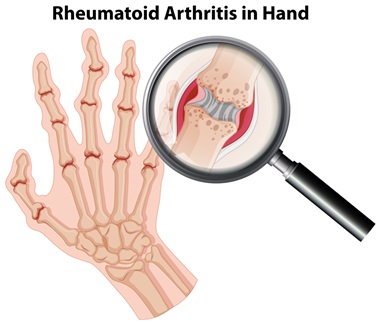
1. Rheumatoid Arthritis (RA)
Modern Perspective: Rheumatoid arthritis is a chronic autoimmune disorder where the immune system mistakenly attacks the synovial lining of the joints, causing persistent inflammation. Over time, this leads to joint damage, loss of function, and deformities.
Severity: RA can range from mild to severe, with episodes of flare-ups followed by periods of remission. In severe cases, it can lead to deformities and significant disability.
Progression: If untreated, RA can lead to irreversible damage to cartilage, bones, and ligaments, and may result in permanent disability and reduced mobility.
Ayurvedic Perspective: Rheumatoid arthritis is considered a Vata and Pitta dosha imbalance, where Ama (toxins) accumulate in the joints, causing inflammation, heat, and stiffness. The aggravated Vata dosha increases dryness, leading to joint destruction and pain. Inflammation is attributed to Pitta dosha. Ayurveda focuses on purging toxins and balancing the doshas to reduce inflammation and restore joint function.
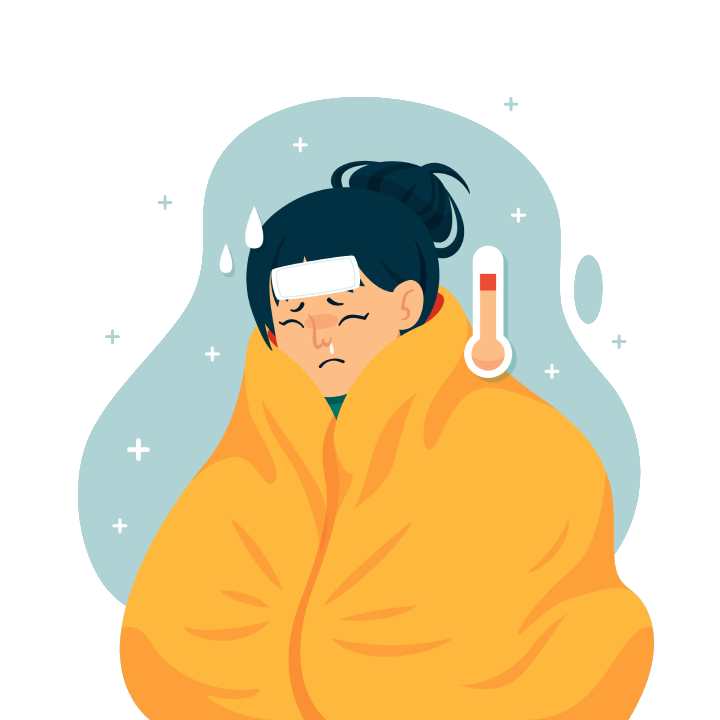
2. Rheumatic Fever
Modern Perspective: Rheumatic fever is an inflammatory disease that can occur after a strep throat infection. It primarily affects the heart, joints, skin, and central nervous system. The condition can cause carditis, joint inflammation, and in severe cases, rheumatic heart disease.
Severity: Rheumatic fever can vary in severity, ranging from mild joint pain and fever to severe damage to the heart valves, which can lead to long-term complications like rheumatic heart disease.
Progression: If not managed, rheumatic fever can cause permanent heart damage, particularly affecting the mitral and aortic valves.
Ayurvedic Perspective: In Ayurveda, rheumatic fever is viewed as a Pitta and Vata dosha imbalance, with Ama accumulating due to improper digestion or untreated infections. The disease is thought to manifest as inflammation that affects multiple parts of the body, particularly the joints. Ayurveda aims to correct the digestive fire (Agni), remove Ama, and restore balance in the doshas through purification and rejuvenation therapies.
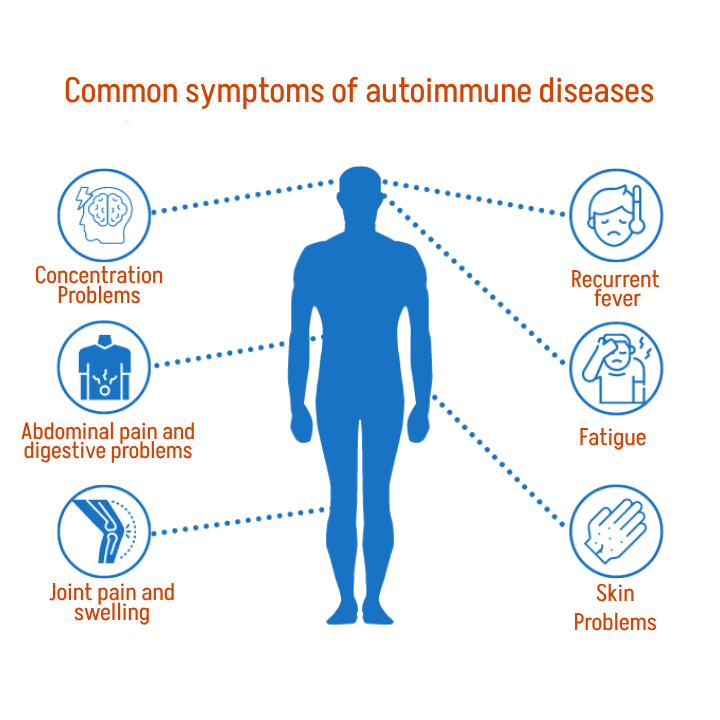
3. Autoimmune Conditions (General)
Modern Perspective: Autoimmune diseases occur when the immune system mistakenly attacks the body’s own tissues. These can affect various organs and systems, leading to inflammation, damage, and dysfunction. Common autoimmune conditions include Hashimoto's thyroiditis, Graves' disease, Multiple sclerosis (MS), and Systemic Lupus Erythematosus (SLE).
Severity: Autoimmune diseases vary greatly in severity. Some, like SLE, can lead to systemic damage, affecting the skin, kidneys, heart, and joints. Others, like Hashimoto's thyroiditis, primarily affect hormone production but may still cause significant health problems.
Progression: If left untreated, autoimmune diseases can lead to organ failure, severe tissue damage, and long-term disability, with fluctuating disease activity and flare-ups.
Ayurvedic Perspective: In Ayurveda, autoimmune diseases are considered to arise from an imbalance in the Agni (digestive fire) and the Prakriti (constitutional nature) of the individual. It is believed that when Ama (toxins) accumulate in the body due to poor digestion, it weakens the immune system and leads to improper immune responses. The treatment approach is to balance the doshas, strengthen the digestive fire, and purify the body to restore proper immune function and prevent further tissue damage.
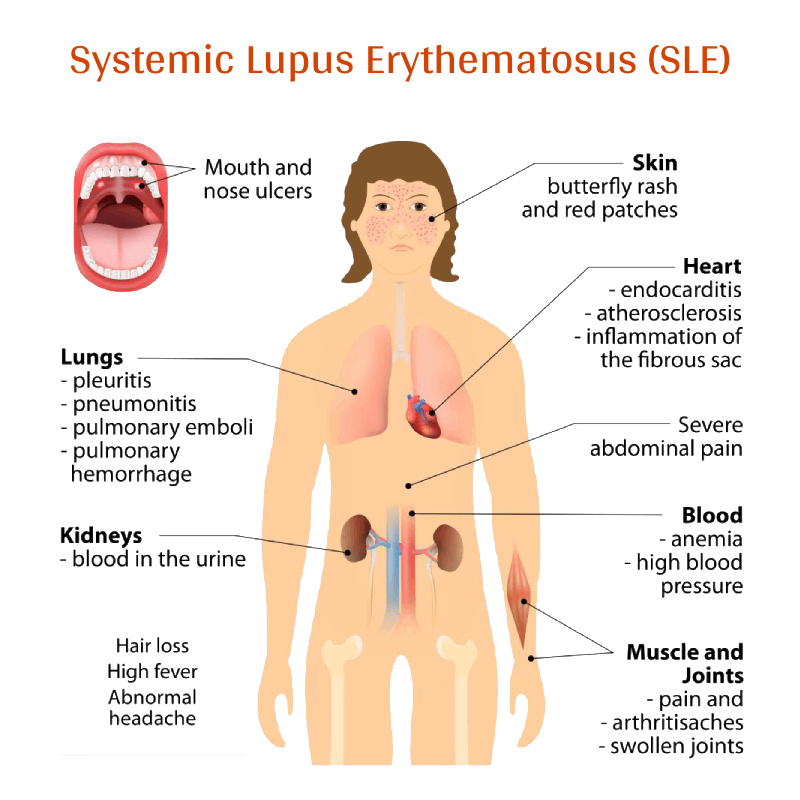
4. Systemic Lupus Erythematosus (SLE)
Modern Perspective: SLE is a chronic autoimmune disease where the immune system attacks various organs, including the skin, kidneys, joints, and heart. It often leads to widespread inflammation, tissue damage, and dysfunction of the affected organs.
Severity: The severity of SLE can vary, with some individuals experiencing mild symptoms such as skin rashes and joint pain, while others may develop serious complications affecting the kidneys, heart, and other organs.
Progression: If not treated, SLE can cause severe organ damage, particularly kidney failure (lupus nephritis), cardiovascular disease, and chronic inflammation.
Ayurvedic Perspective: SLE is seen as a Pitta and Vata dosha imbalance, with an underlying buildup of Ama in the body. The excessive heat and inflammation are attributed to the Pitta dosha, while the imbalance in Vata dosha causes weakness and degeneration in tissues. Ayurveda seeks to purify the body of Ama, improve digestion, and restore balance in the doshas through cleansing and rejuvenating therapies, supporting the body's innate healing process.
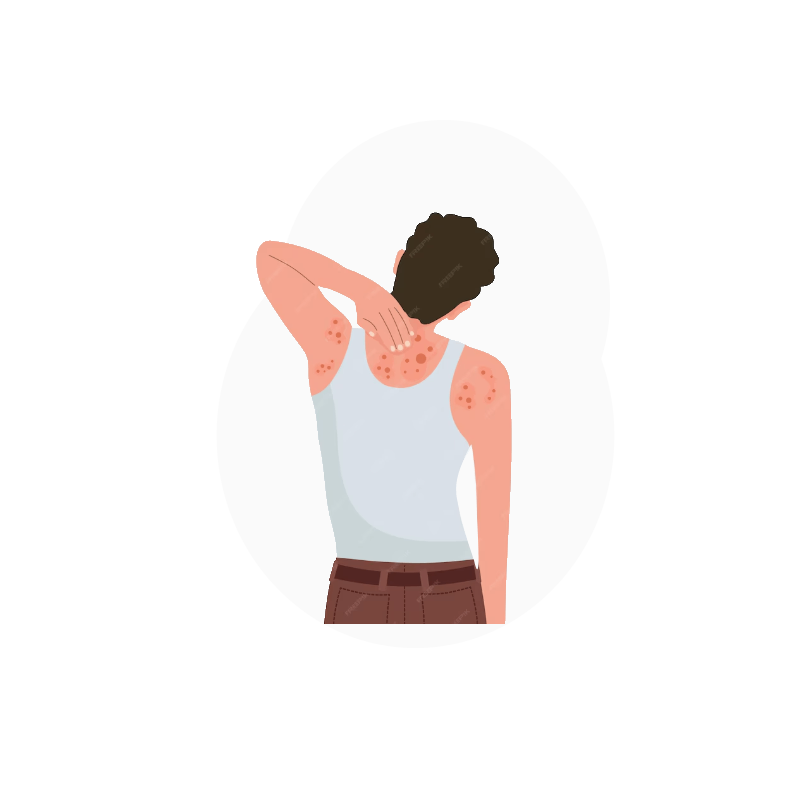
5. Psoriatic Arthritis
Modern Perspective: Psoriatic arthritis is a type of inflammatory arthritis that occurs in people with psoriasis, a skin condition characterized by red, scaly patches. The inflammation affects the joints, leading to pain, swelling, and stiffness.
Severity: The severity of psoriatic arthritis can vary, with some people experiencing mild joint pain and stiffness, while others may have more severe symptoms, including joint deformities and reduced range of motion.
Progression: Over time, the condition can lead to permanent damage to the joints, particularly in the fingers, toes, and spine, limiting mobility and causing long-term disability.
Ayurvedic Perspective: Psoriatic arthritis is primarily linked to an imbalance in Kapha and Vata doshas, which results in excessive moisture and dryness in the body. The Ama generated by poor digestion is thought to contribute to the inflammation and skin lesions. Ayurveda focuses on eliminating Ama, balancing the doshas, and promoting detoxification to restore skin and joint health. Pitta dosha imbalance is also associated with the skin manifestations of psoriasis.
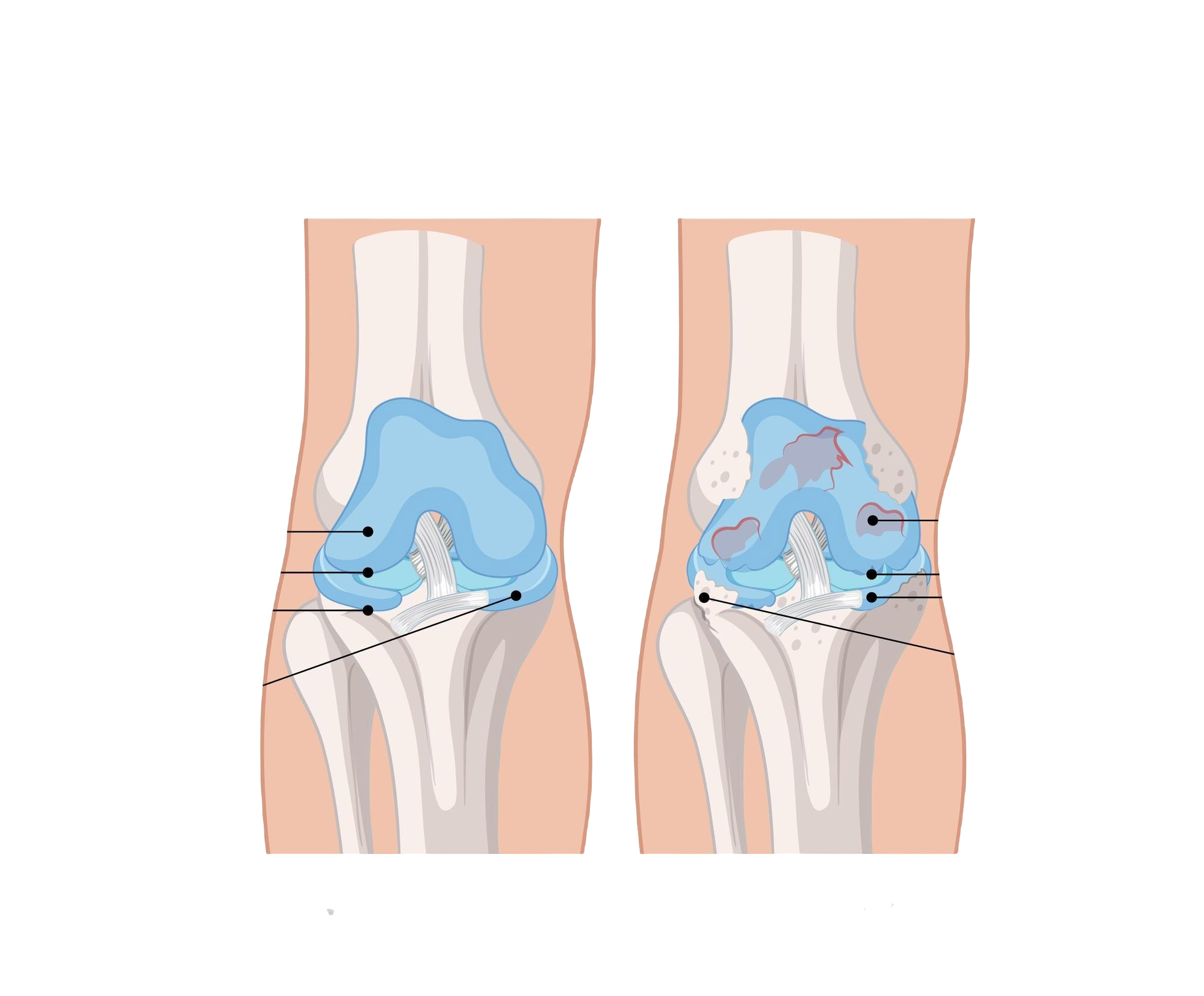
6. Osteoarthritis (OA)
Modern Perspective: Osteoarthritis is the degenerative joint disease caused by the gradual breakdown of cartilage, leading to pain, stiffness, and reduced mobility. It often affects the weight-bearing joints like the knees, hips, and spine.
Severity: OA severity can range from mild discomfort to severe pain and loss of joint function, particularly as cartilage wears down completely.
Progression: Over time, the disease can lead to joint deformities, bone spurs, and severe disability due to loss of joint function.
Ayurvedic Perspective: Osteoarthritis is associated with an imbalance in the Vata dosha, which governs movement and flexibility. In Ayurveda, the condition is thought to result from the depletion of Sleshaka Kapha, the bodily fluids responsible for lubricating and cushioning the joints. The imbalance leads to dryness and stiffness, which Ayurveda seeks to address through purification, rejuvenation, and nourishment of the tissues and joints.
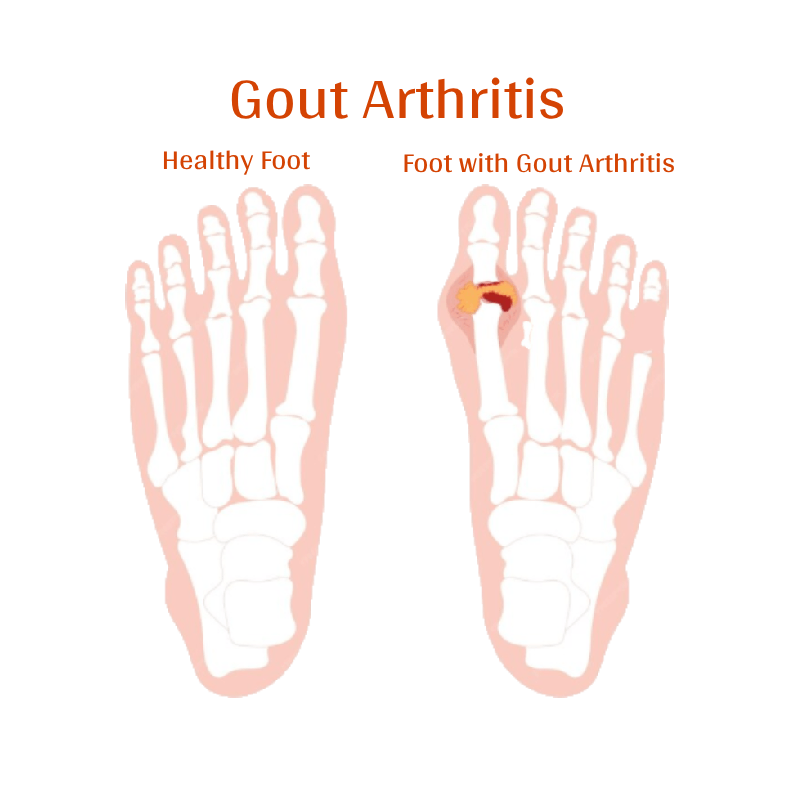
7. Gout
Modern Perspective: Gout is a form of inflammatory arthritis caused by the buildup of uric acid crystals in the joints, especially the big toe. This condition often results from excessive purine intake, either through diet or impaired uric acid excretion.
Severity: Gout presents as acute, sudden attacks of pain and swelling in the affected joints. The condition can lead to chronic gout if not managed, with repeated flare-ups causing joint damage and permanent deformities.
Progression: Untreated gout can lead to tophi (deposits of uric acid crystals) in the joints, which can damage the cartilage and cause joint deformities.
Ayurvedic Perspective: Gout is considered an imbalance of Vata and Kapha doshas in Ayurveda, where Ama (toxins) accumulate and lead to the deposition of uric acid crystals in the joints. This is seen as a disturbance of the Agni (digestive fire), resulting in improper metabolism and accumulation of toxins in the body. Ayurveda focuses on eliminating Ama, reducing Pitta (heat), and balancing the doshas to prevent the buildup of uric acid crystals.
8. Low Back Pain
Modern Perspective: Low back pain can arise from various causes, including muscle strain, ligament injuries, herniated discs, and degenerative conditions such as lumbar spondylosis.
Severity: The severity can range from mild, intermittent discomfort to chronic pain and nerve involvement, leading to reduced mobility.
Progression: If untreated, chronic low back pain can lead to long-term disability, muscle weakness, and loss of function.
Ayurvedic Perspective: In Ayurveda, low back pain is primarily associated with Vata dosha imbalances. The pain, stiffness, and limited movement are due to a disturbance in the Vata responsible for flexibility and mobility.
9. Neck Pain
Modern Perspective: Neck pain can be caused by a variety of factors, including muscle strain, ligament injuries, poor posture, stress, or degenerative conditions like cervical spondylosis. It often manifests as discomfort, stiffness, or tension in the neck muscles, sometimes radiating to the shoulders or upper back.
Severity: The severity of neck pain can range from mild discomfort that resolves on its own to more intense, chronic pain that may restrict movement. In some cases, the pain may also radiate to the arms, especially if nerves are compressed or irritated.
Progression: If left untreated, neck pain may progress to chronic pain and discomfort, potentially leading to muscle weakness or nerve involvement. This may limit daily activities and affect the quality of life.
Ayurvedic Perspective: In Ayurveda, neck pain is primarily associated with an imbalance in Vata dosha, particularly when there is dryness and stiffness in the tissues. Poor posture, stress, and improper sleeping positions aggravate Vata, leading to tension and discomfort in the neck. Additionally, Ama (toxins) can accumulate due to impaired digestion and poor circulation, leading to stiffness and restricted movement. Ayurveda focuses on balancing the Vata dosha and removing Ama to relieve pain and promote flexibility.
10. Shoulder Pain
Modern Perspective: Shoulder pain can result from a variety of causes, including muscle strains, rotator cuff injuries, bursitis, arthritis, or frozen shoulder. The shoulder joint is one of the most mobile joints in the body, making it prone to injury and overuse. Pain in the shoulder can vary in severity, depending on the underlying condition.
Severity: Shoulder pain can range from mild discomfort that resolves on its own to severe pain that limits range of motion and affects daily activities.
Progression: Left untreated, shoulder pain can become chronic and lead to significant restrictions in movement, particularly if a rotator cuff injury or arthritis is involved.
Ayurvedic Perspective: Shoulder pain is often associated with an imbalance in Vata and Kapha doshas. When Vata is aggravated, it can lead to stiffness and limited movement, while Kapha may contribute to the accumulation of toxins or fluid retention around the shoulder joint. Ayurveda focuses on balancing both Vata and Kapha, promoting circulation, reducing inflammation, and restoring proper function to the shoulder.
Treatment Modalities at Ennakkathara Arya Vaidyasala
1. Ayurvedic Therapies:
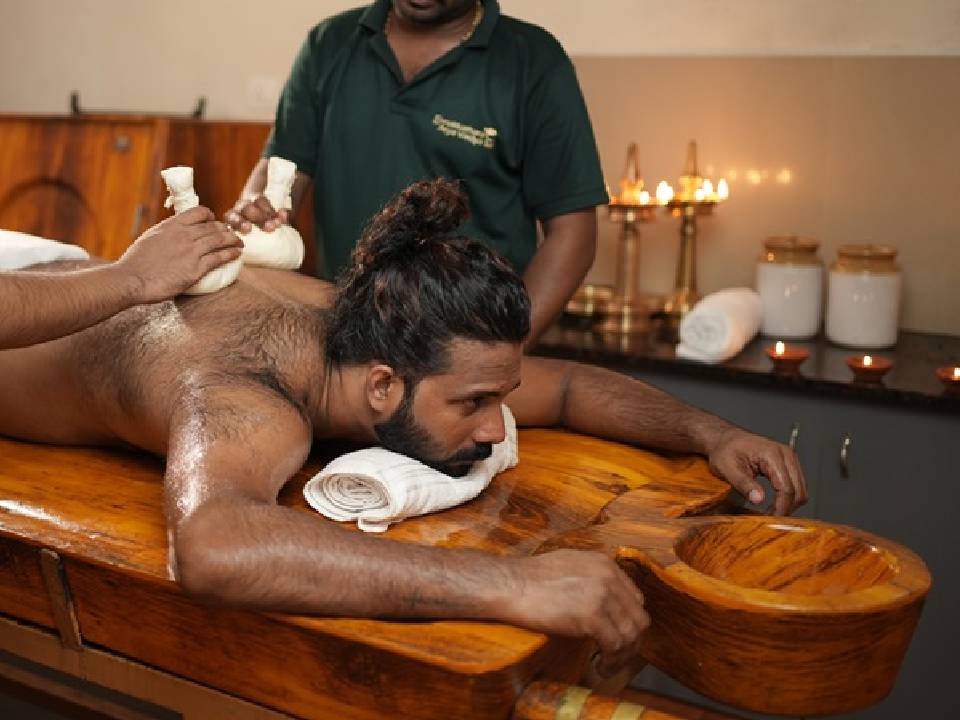
Panchakarma:
We use Panchakarma therapies like Vasti (medicated oil enemas), Sneha Vasti, and Kati Vasti (oil therapy for lower back pain) to detoxify the body and relieve joint and muscle pain.
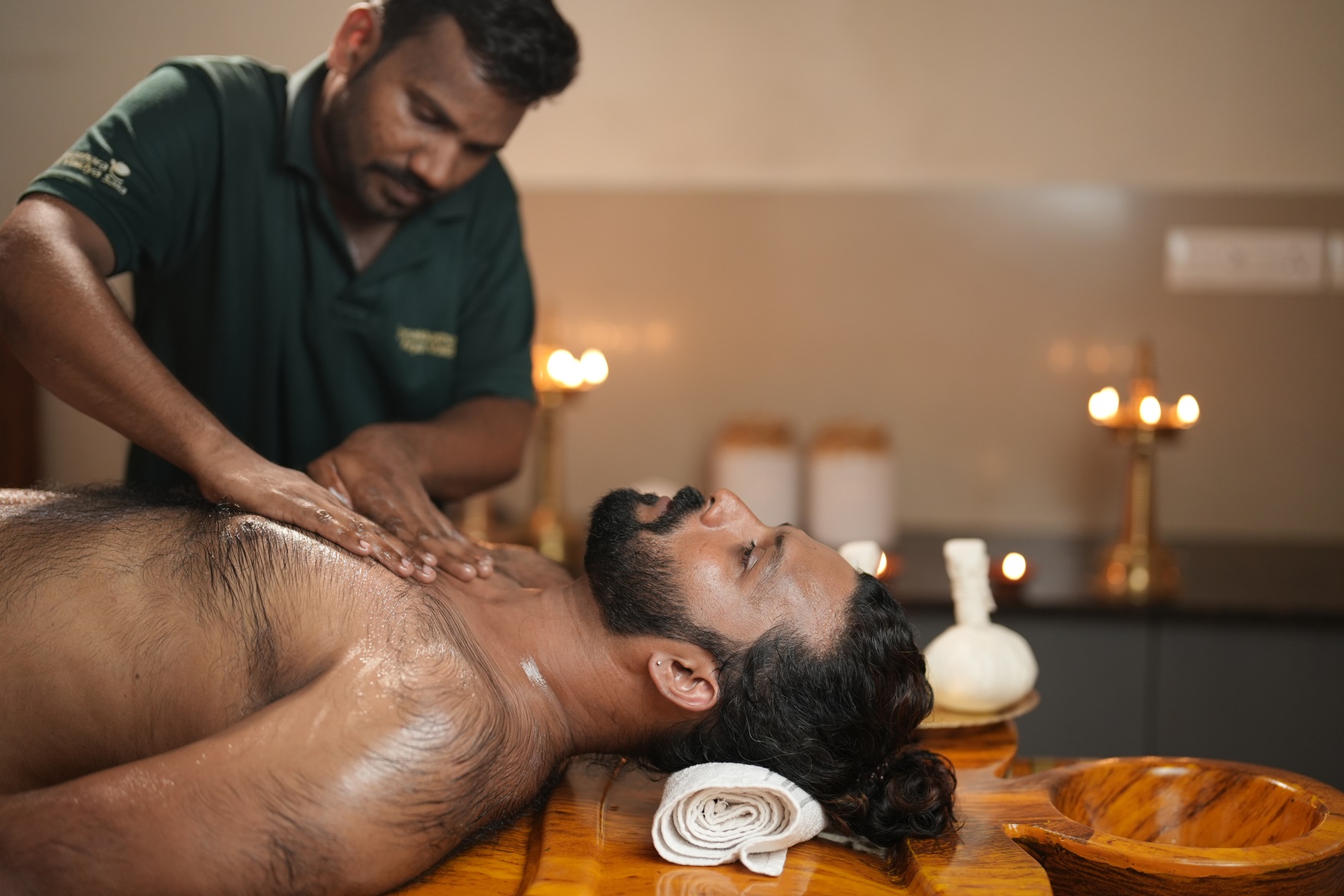
Uzhichil:
A special Kerala massage with medicated oils that targets pain and stiffness in joints and muscles.
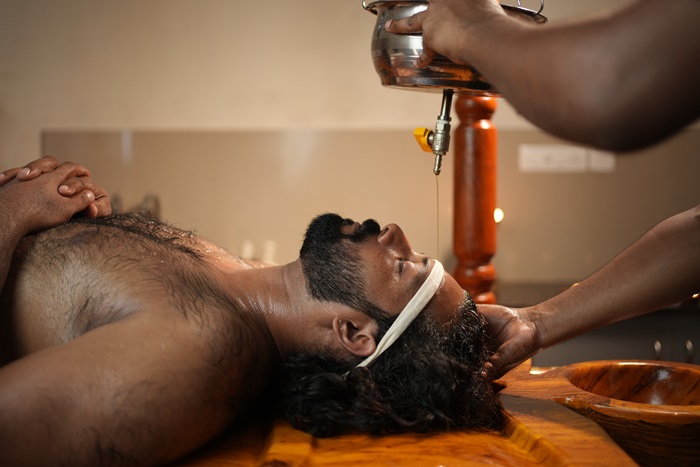
Rasayana Therapy:
Rejuvenation treatments that strengthen the muscles and bones, improving overall joint mobility and flexibility.

Herbal Remedies:
Customized herbal formulations that help reduce inflammation, improve joint health, and relieve pain.
2. Yoga Therapy:
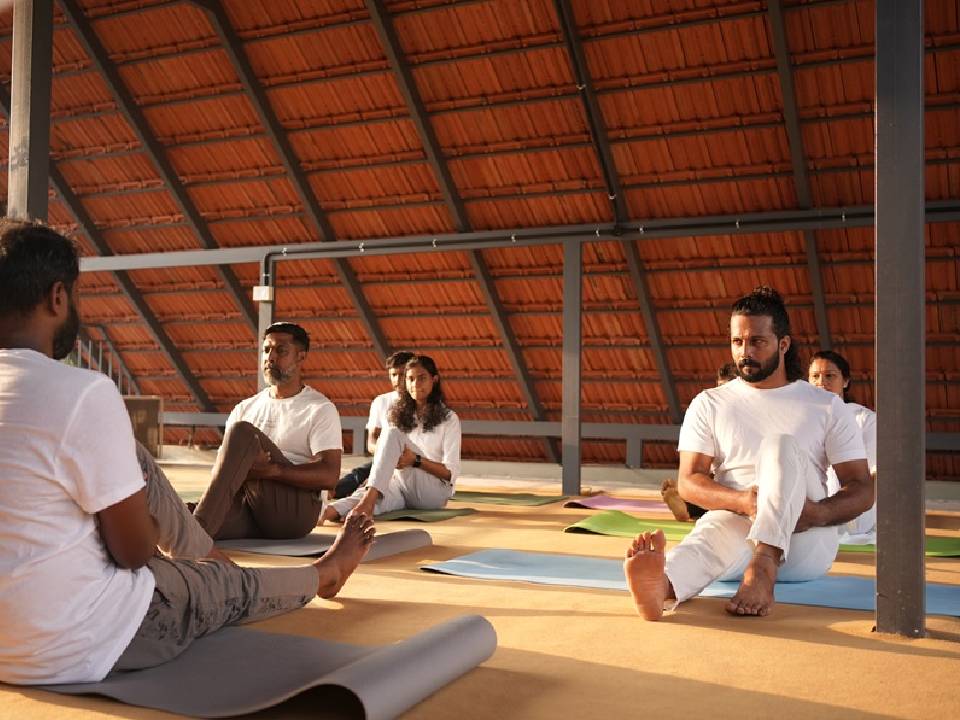
Yoga Asanas:
Specific Asanas (Yoga Postures) are tailored for musculoskeletal conditions to improve flexibility, strengthen muscles, and reduce stiffness.
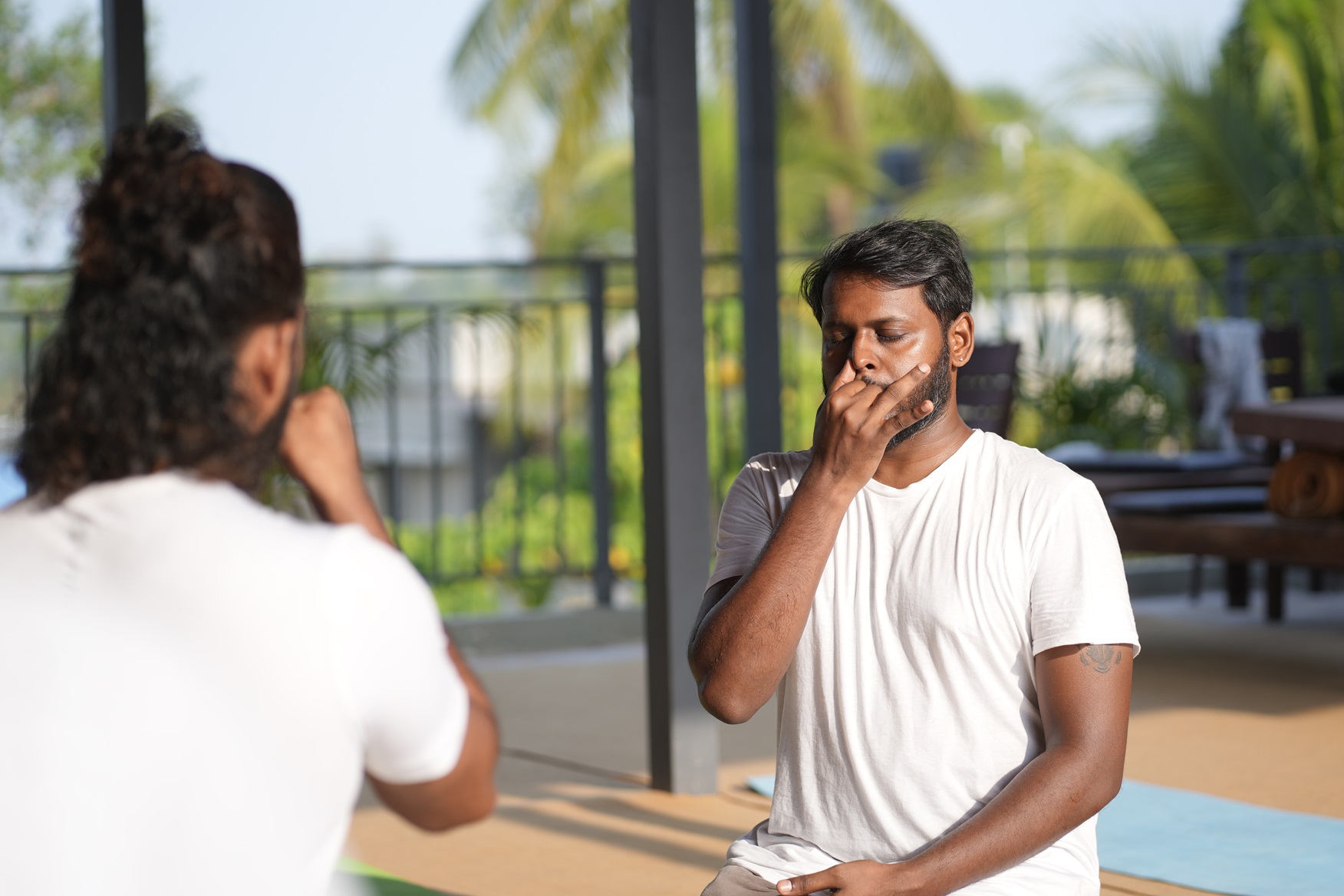
Pranayama:
Pranayama (breathing techniques) help improve blood circulation, relax the muscles, and reduce pain.
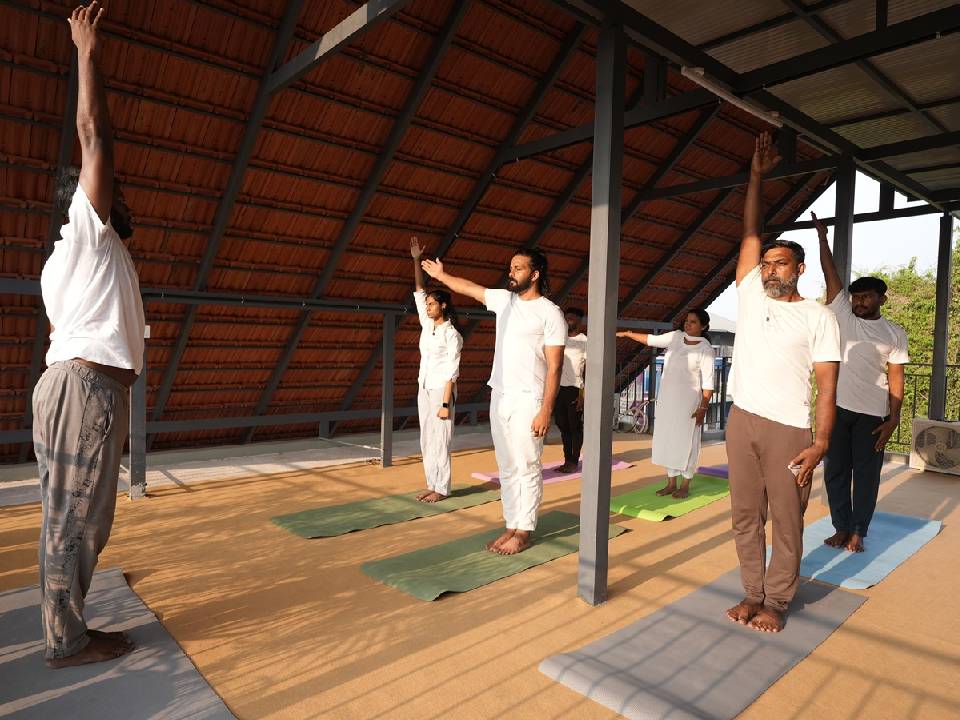
Yoga Retreats:
Yoga Retreats and Personalized Yoga Sessions are designed to support rehabilitation and promote long-term healing.
3. Cupping Therapy:
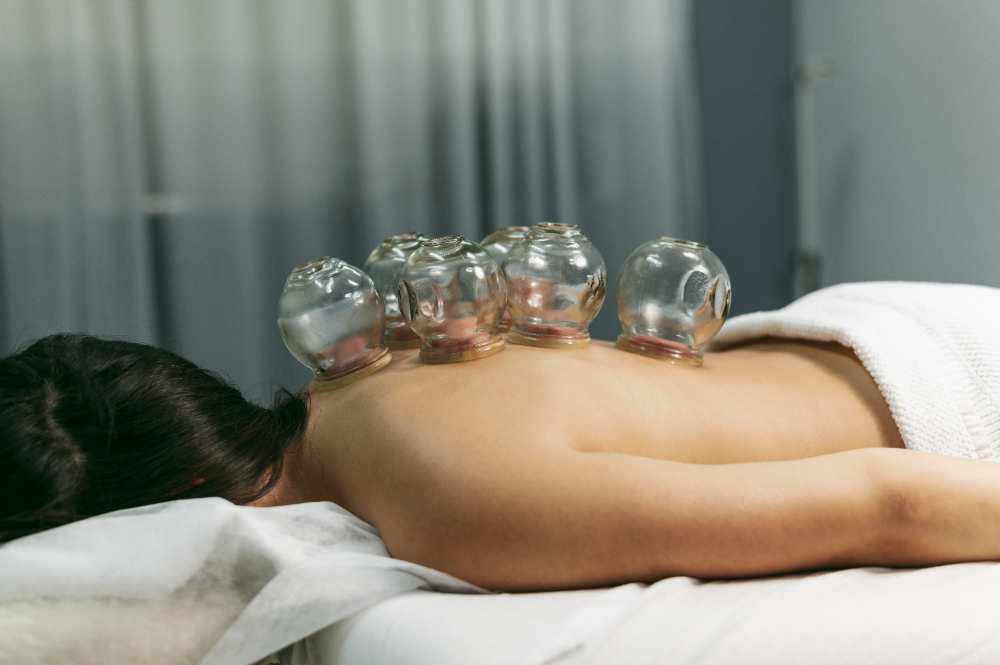
Cupping Therapy:
Cupping therapy involves placing special cups on the skin to create suction. This helps relieve muscle stiffness, improves blood circulation, and reduces pain and inflammation in affected joints.
4. Acupuncture:
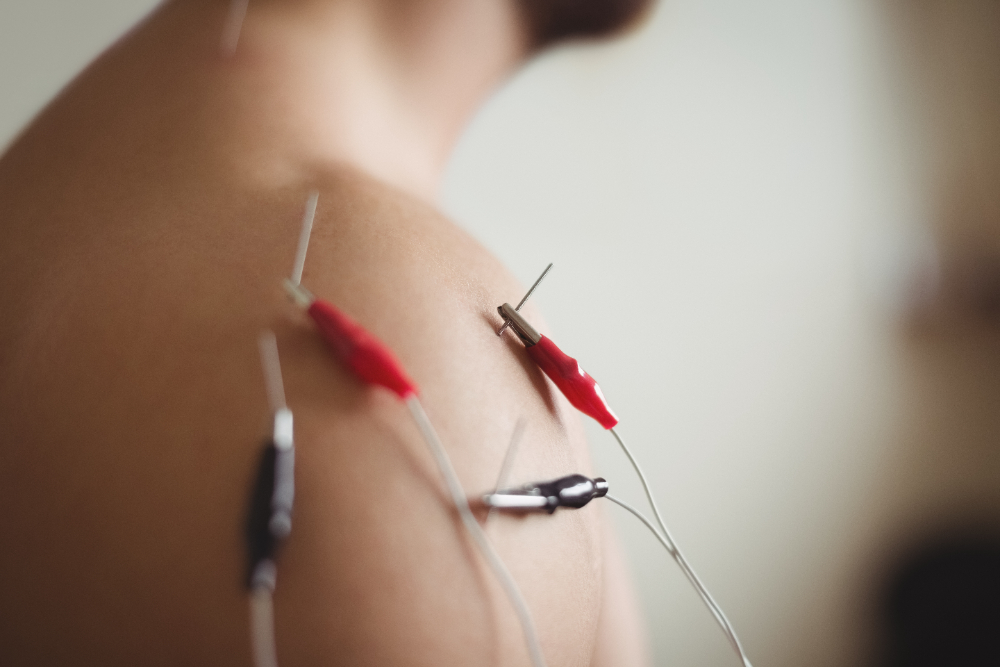
Acupuncture:
Acupuncture involves inserting thin needles into specific points on the body to promote healing, reduce pain, and restore balance in the body’s energy systems.
5. Dorn Therapy:

Dorn Therapy:
Dorn Therapy is a gentle, non-invasive spinal and joint mobilization technique. It is used to correct misalignments and treat conditions like scoliosis, back pain, and joint stiffness.
6. Exercise Therapy:
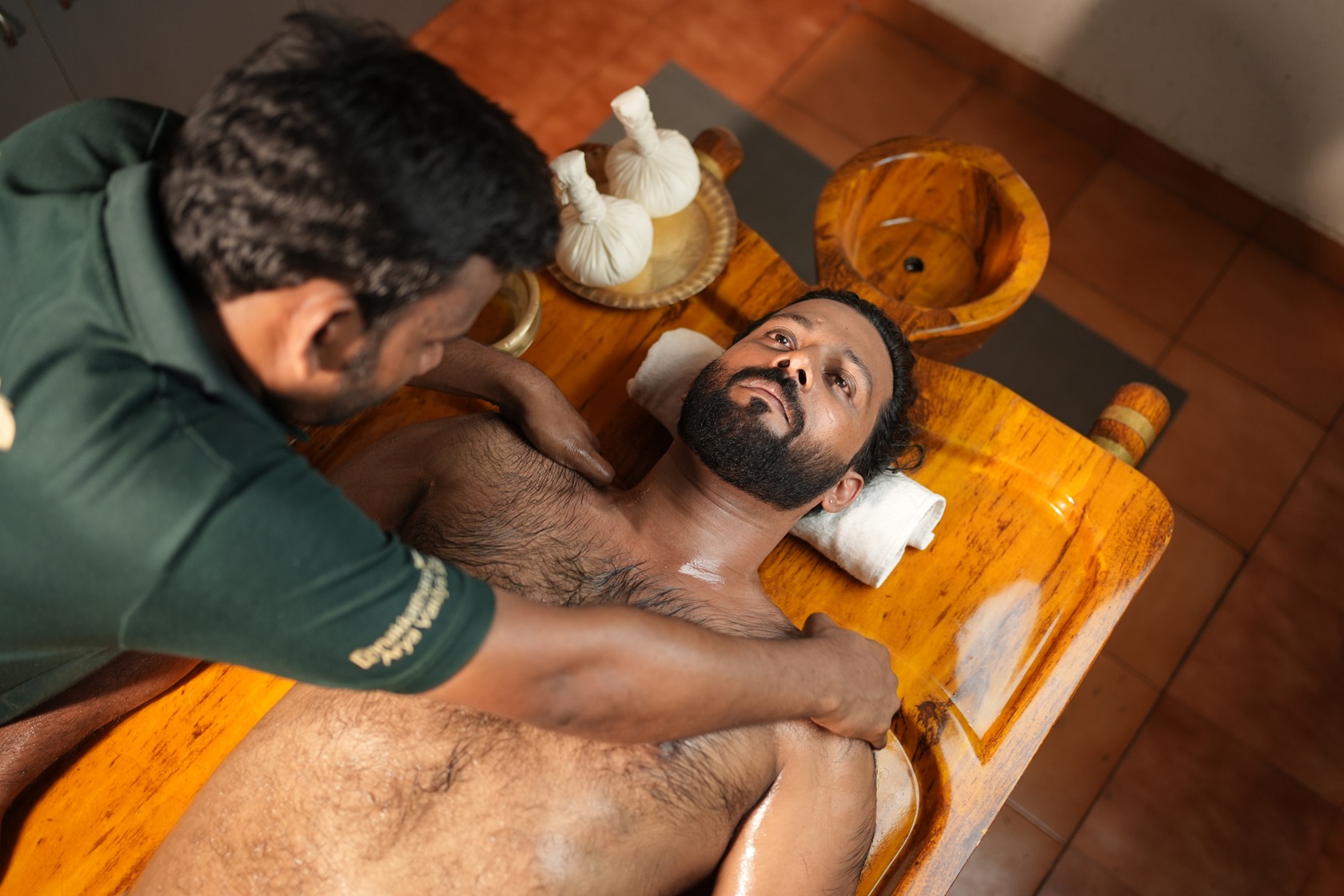
Physical Therapy:
Tailored exercises to strengthen muscles, improve joint mobility, and alleviate pain. This includes low-impact exercises that enhance flexibility and muscle tone, which can significantly improve the condition of patients with musculoskeletal disorders.

Strengthening Exercises:
Exercises focusing on strengthening the muscles around the joints and improving flexibility, helping to reduce pain and prevent further injury.
7. Modern Facilities and Knowledge:
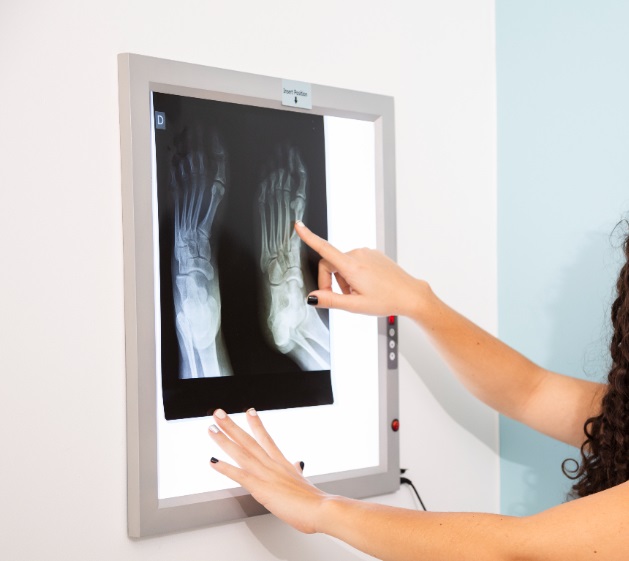
X-ray and Diagnostic Facilities:
We integrate modern diagnostic tools like X-rays and MRI scans to accurately assess the condition of joints, bones, and the spine.
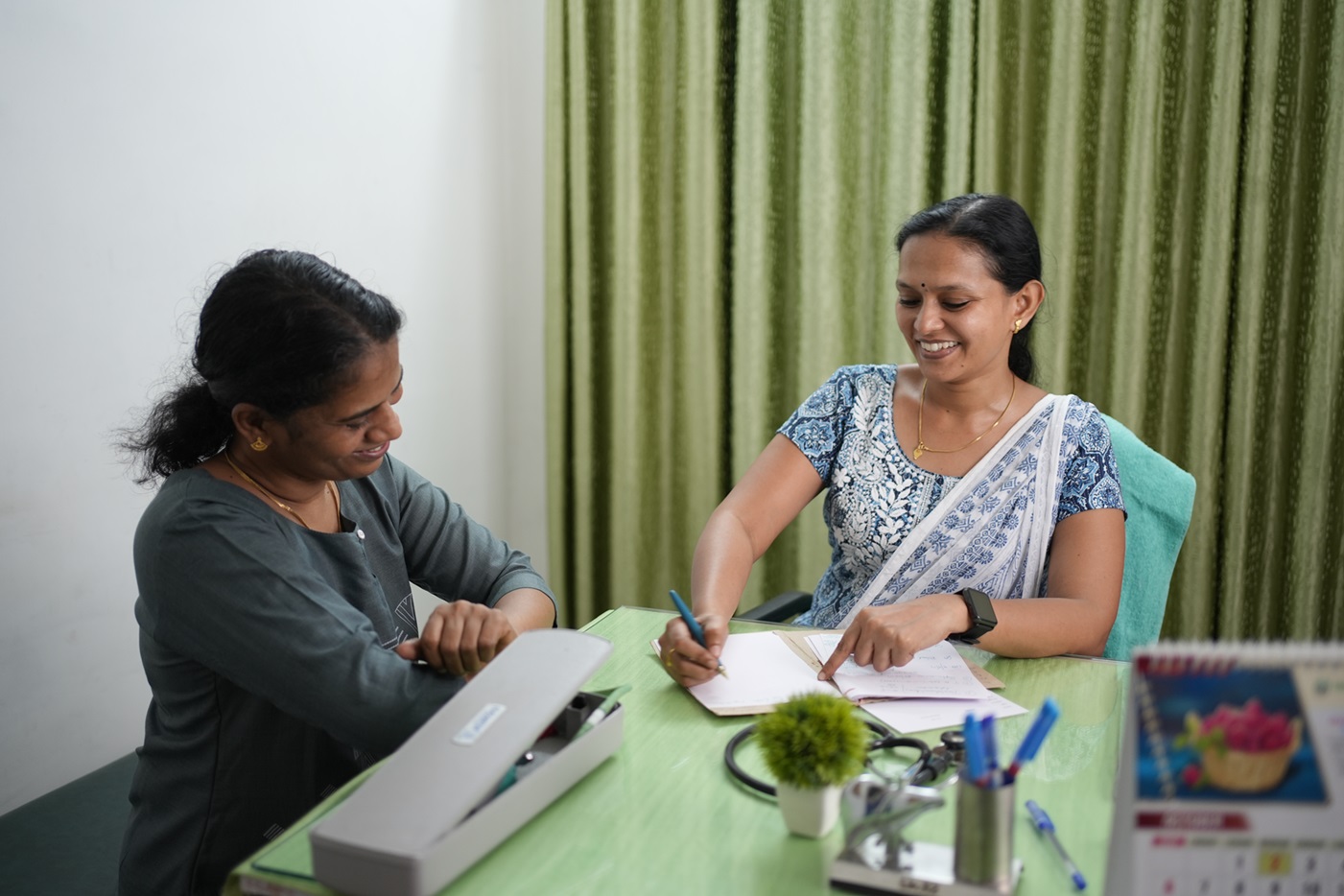
Customized Treatment Plans:
Based on thorough evaluation, our expert physicians create personalized treatment plans that combine Ayurvedic therapies with modern medical practices for optimal healing.
Holistic Approach to Musculoskeletal Health
At Ennakkathara Aryavaidyasala, we understand that musculoskeletal and joint disorders often require a multi-faceted approach to healing. Our treatments are designed to provide immediate relief, long-term management, and prevention of future ailments. By combining the wisdom of Ayurveda, the healing power of yoga, and modern therapies, we offer a holistic solution for patients suffering from a wide range of joint and spine issues.
Why Choose Ennakkathara Arya Vaidyasala?
Experienced Ayurvedic Practitioners: With over four decades of expertise in Ayurveda, our team offers the best traditional therapies tailored to your unique needs.
Integrative Therapies: We combine Ayurveda, Yoga, Cupping Therapy, Acupuncture, Dorn Therapy, and modern physical therapies to deliver the most effective treatment.
Personalized Care: Every patient receives a treatment plan that addresses their specific condition, ensuring the best possible outcomes.
State-of-the-art Facilities: Our multispecialty Ayurvedic hospital is equipped with the latest diagnostic tools and therapeutic equipment to support your healing journey.
Let us help you restore your health, mobility, and quality of life with authentic Ayurvedic treatments and holistic care at Ennakkathara Aryavaidyasala.


